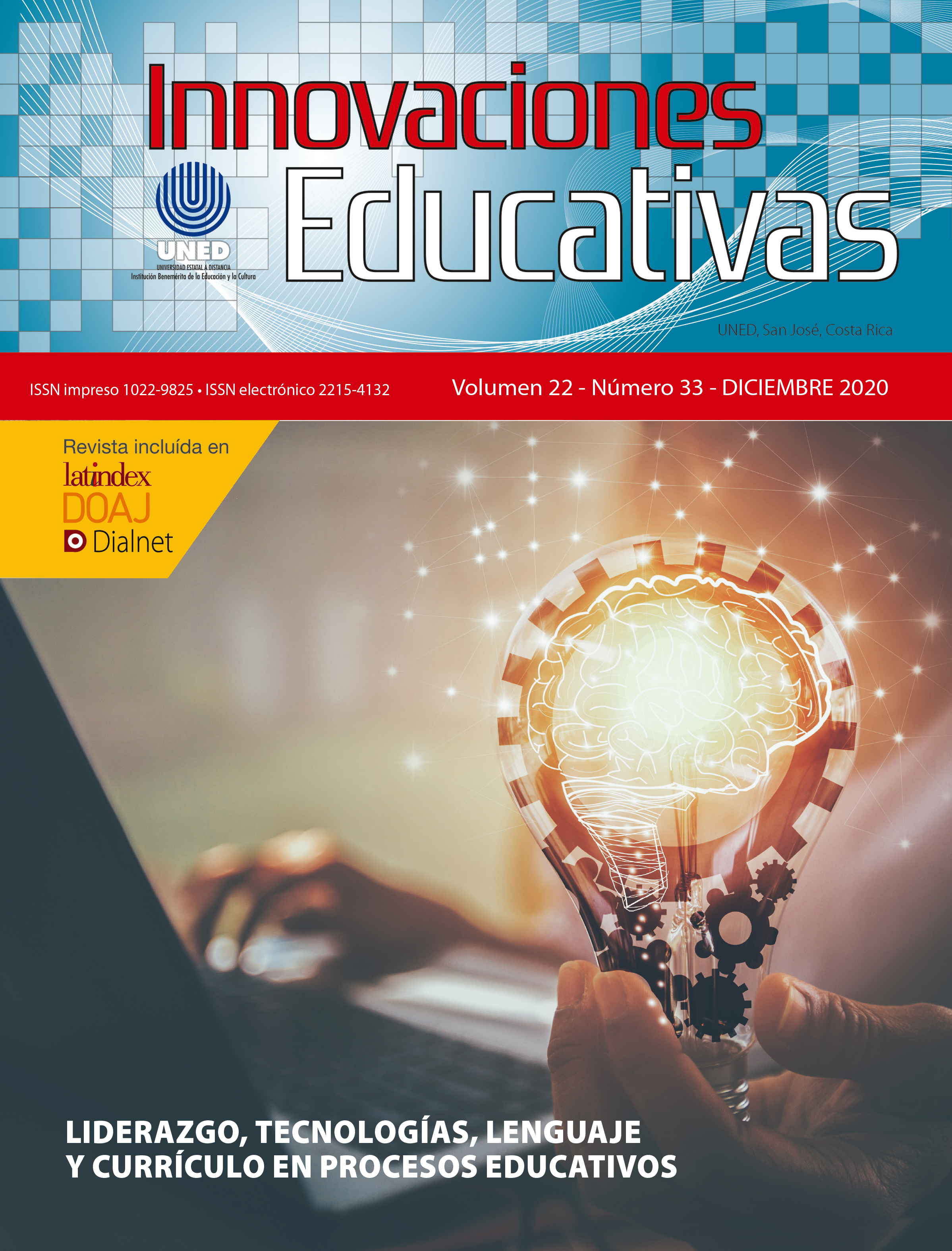Vigotsky’s contributions and critical pedagogy for the transformation of curriculum design in the twenty-first century
DOI:
https://doi.org/10.22458/ie.v22i33.3043Keywords:
Education, Curriculum, curriculum design, universities,, higher education curriculumAbstract
The validity and relevance of Vygotsky’s postulates for pedagogy in the twenty-first century
is a fact given the social, political, and economic needs and social transformations that demand a new
educational response, which is also true in the case of curriculum design. Faced with this reality, the
present essay aims to analyze Vigotsky’s premises for a potential curricular design transformation, so it
is relevant in the context of the twenty-first century. Consequently, an evaluation of some of Vigotsky’s academic premises was carried out. They were examined from a critical pedagogy perspective using documentary analysis of his work and considering its interaction with the curriculum. In conclusion, Vygotsky’s premise on overcoming biological, individualistic, and academic reductionism in learning, sociocultural reality, the influence of social structure in human behavior, and students’ cultural age must overthrow the notion that describes students as empty containers that need to be filled with content. All of which require curricular design innovations to favor the curriculum’s pertinence, relevance, and significance as a knowledge area, product (curricular structure) correspondent with classroom reality in the educational system in general.
References
Apple, M. (1997) Política cultural y educación. España: Morata.
_______. (1996a). Educación y poder. España: Paidós.
_______. (1996b). El conocimiento oficial, La educación democrática en una era conservadora. España: Paidós.
Barba, M; Cuenca, M; y Rosa, A. (2007). Piaget y L.S. Vigotsky en el análisis de la relación entre educación y desarrollo. En: Revista Iberoamericana de Educación, 42 (7), pp. 1-12.
Chaves, A. (2001). Implicaciones Educativas de la Teoría Sociocultural de Vigotsky. En: Revista Educación 25 (2), pp. 59-65.
Freire, P. (2001). Pedagogía de la Indignación. España: Morata
Freire, P. (1977). La educación como práctica de la libertad. México: Siglo Veintiuno.
Gimeno, J. (2001). El currículum: una reflexión sobre la práctica. España: Morata. S.A.
________. (1998). Poderes inestables en educación. España: Morata. S.A.
________. (1997). Pedagogía por objetivos. Obsesión por la eficiencia. España: Morata.
Giroux, H; McLaren (1998). Sociedad, cultura y educación. España: Niño y Dávila Editores.
Kemmis, S. (1998). El currículum: más allá de la teoría de la reproducción. España: Morata
McLaren, P. (1995). Pedagogía crítica y cultura depredadora. Políticas de oposición en la era posmoderna. España: Paidós.
Pineda, W. (2011). La teoría de la mente en la educación desde el enfoque socio-histórico de Lev Vigotsky. En: Educación y Humanismo, 13 (20), pp, 220-233.
Radford, L. (2004). Semiótica cultural y cognición. Conferencia plenaria da en la XVIII Reunión Latinoamericana de Matemática Educativa. Universidad Autónoma de Chiapas. Chiapas.
Torres, J. (2001). Educación en tiempos del Neoliberalismo. España: Morata S.A.
Torres, J. (1998). El currículum oculto. España: Morata.
Toruño, C. (2020). El currículum en el contexto costarricense: propuesta de definiciones para su conceptualización. Revista Ensayos Pedagógicos, 15(1), 39-59. https://doi.org/10.15359/rep.15-1.2
Vigotsky, L. (2001). Obras Escogidas (Tomos I, II, III y IV). Madrid: Machado Libros.

